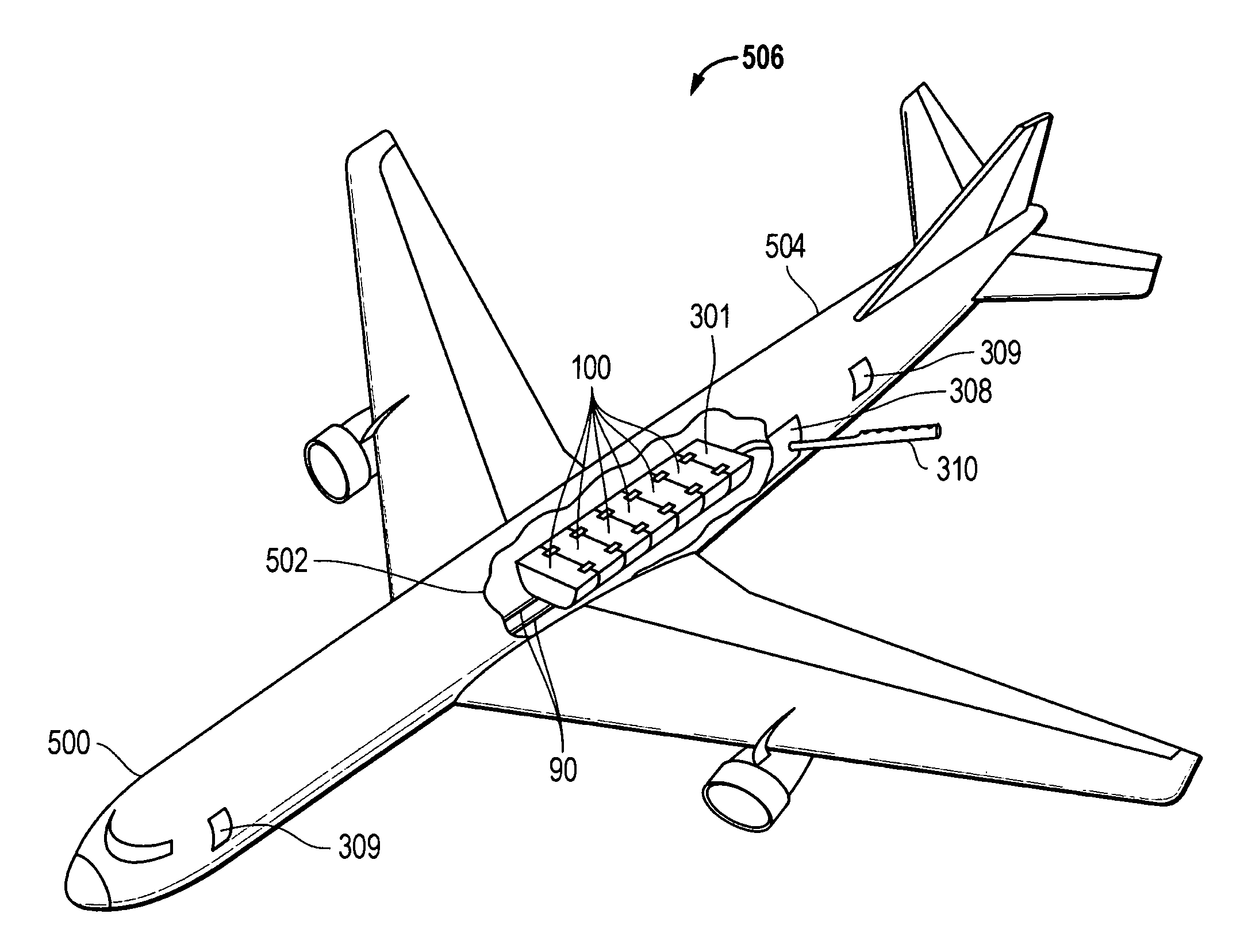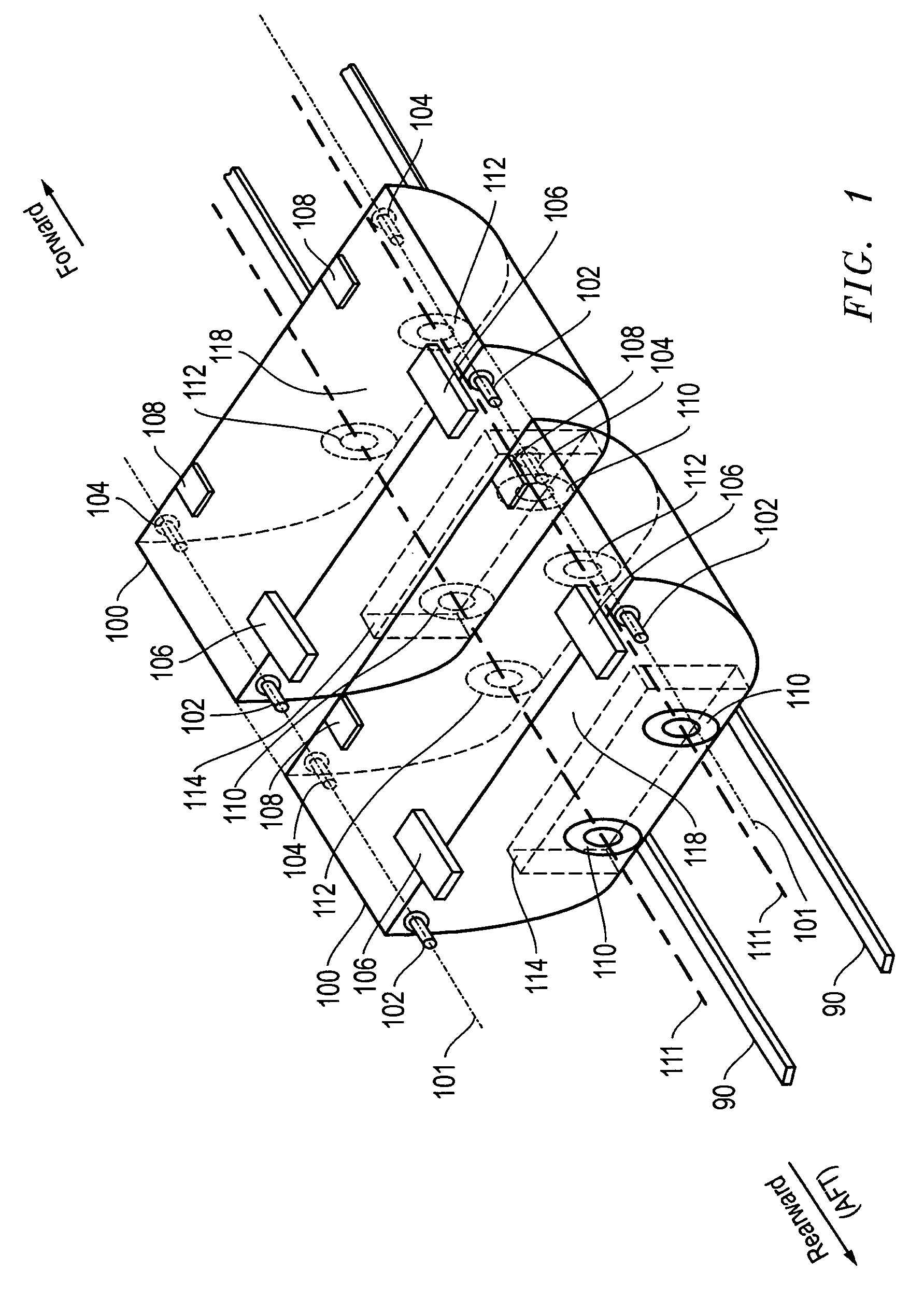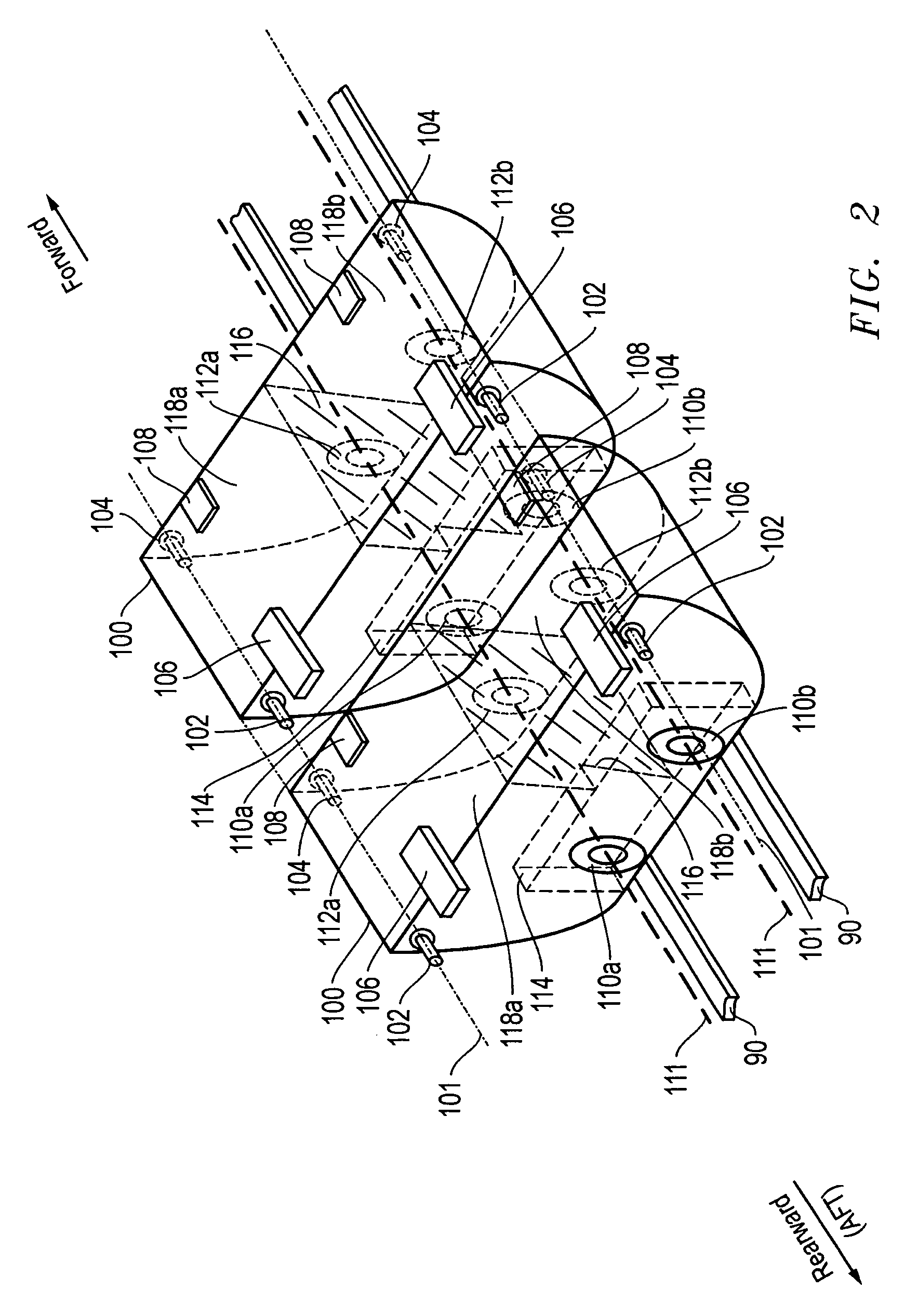Systems and methods for aerial dispersion of materials
a material and material technology, applied in the field of aircraft systems, can solve the problems of lack of fire-fighting aircraft, limited maffs capacity, loss of aircraft and crew, etc., and achieve the effect of high lift capacity
- Summary
- Abstract
- Description
- Claims
- Application Information
AI Technical Summary
Benefits of technology
Problems solved by technology
Method used
Image
Examples
Embodiment Construction
[0022]FIG. 1 illustrates aerial dispersant holding tanks 100 that may be employed in one embodiment to temporarily modify an aircraft, such commercial or military wide-body aircraft, for the aerial dispersement of materials. FIG. 1 shows two aerial dispersant holding tanks 100 positioned in a front end-to-rear end relationship as they may be deployed within the baggage or cargo hold of an aircraft. However, it will be understood that any number of such tanks 100 may be flexibly employed in a given aircraft as may be desirable or required to fit the needs of a given application. In this regard, a greater number of tanks 100 may be employed in aircraft having longer cargo holds and higher lift capacities, and / or in those situations where it is desirable to provide a relatively large volume for carrying dispersant material. A smaller number of tanks 100 may be employed in smaller aircraft and / or in situations where it is desirable to provide a relatively smaller volume for carrying dis...
PUM
 Login to View More
Login to View More Abstract
Description
Claims
Application Information
 Login to View More
Login to View More - R&D
- Intellectual Property
- Life Sciences
- Materials
- Tech Scout
- Unparalleled Data Quality
- Higher Quality Content
- 60% Fewer Hallucinations
Browse by: Latest US Patents, China's latest patents, Technical Efficacy Thesaurus, Application Domain, Technology Topic, Popular Technical Reports.
© 2025 PatSnap. All rights reserved.Legal|Privacy policy|Modern Slavery Act Transparency Statement|Sitemap|About US| Contact US: help@patsnap.com



